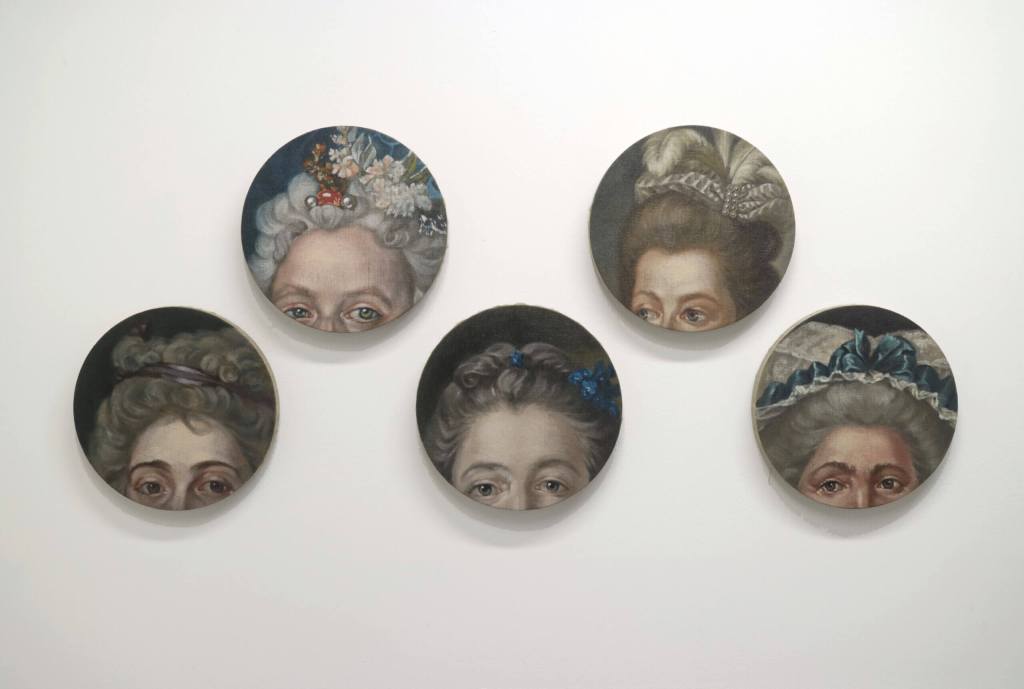[ad_1]
With most major art fairs canceled, mega-galleries have stepped in to launch platforms meant to help their emerging colleagues. This month, Hauser & Wirth is helping to support the June Art Fair, an event meant to uphold young galleries that was launched last year by Esperanza Rosales and Christian Andersen. The first edition took place last year in a bunker in Basel, Switzerland, and with most major art events having gone digital, the June Art Fair has moved online, too.
Held in partnership with ArtReview magazine, the fair is now live on Hauser & Wirth’s website. Due to run through August 31, the fair includes 17 emerging international galleries hailing from 12 countries spanning Europe, North America, Asia and the Middle East. “With this collaboration, we wanted to be able to support the wider artworld ecosystem and provide a platform for younger galleries and emerging artists who are affected by the physical cancellation of so many events in the art world,” said Neil Wenman, partner at Hauser & Wirth, in a statement.
Hauser & Wirth is not the only mega-gallery to have engineered a platform meant to support younger galleries—David Zwirner also recently unveiled a digital initiative intended to showcase works put up for sale by emerging enterprises. Such platforms can have commercial advantages for emerging dealers, especially since a small set of blue-chip galleries with robust online platforms are beginning to emerge as the key drivers of a burgeoning online market. According to the 2020 Hiscox Online Art Trade, 63 percent of the art companies surveyed were expecting mega-galleries to emerge as some of the biggest players in the online art market.
In interviews, dealers participating in June said that a fair such as this one has its benefits. “We do believe that this new model is here to stay, and it will develop over time and generate even more results,” said Nadia Gerazouni, director at Athens’s Breeder Gallery. “With fairs shifting to the virtual online format, the core of the sales tends to be to collectors we know through the gallery’s contacts and the infrastructure it built from its physical presence in major art fairs all these past years. Trust between a collector and a gallery takes longer to build online, and it is not as straightforward as a physical sale would be.”
Gerzouni said sales early on had been swift. The Breeder placed two paintings by Jannis Varelas priced between $$28,000 and $45,000 with European collections during the fair’s preview. After those sales, collectors began inquiring about Varelas’s earlier works, Gerzouni said—a sign that the exposure had already begun paying off.
With work for sale by high-profile artists such as Paul Mpagi Sepuya, Sky Hopinka, and Ulrike Müller, June’s offerings rival what is typically found at fairs like Art Basel and Frieze. Accordingly, it’s attracted galleries who typically show at those premier fairs. Los Angeles’s François Ghebaly gallery is among them, and at June, the enterprise sold out its showing of six oil and acrylic works by Cassie Namoda. Focused on the legacies of colonialism, the figurative works were priced between $4,500 and $14,000.
Vienna dealer Croy Nielsen sold Subaltern Autonomous Zone (2020), a figurative painting by Georgia Gardner Gray, for €20,000 (around $23,500). Tokyo gallery Misako and Rosen sold four abstract paintings by Margaret Lee—a cofounder of New York’s closely watched 47 Canal gallery—from her new series “I.C.W.U.M.” for $15,000 each. And Chicago’s Document gallery sold an untitled edition from 2018 by Sepuya, a photographer who figured in the 2019 Whitney Biennial, to an American collector for $5,000 and placed three more works from a related series in an international collection.
Conceptual artworks can be a challenge to sell, but at June, they were already finding buyers. Tokyo’s XYZ collective brought works by Japanese artist Yuka Hasegawa. One piece, a Fendi sweatshirt replica, carried a price tag of $2,600; another, titled Spice Girls, mimed the look of 18th-century paintings and was priced at $3,800.
Compared to something like Art Basel, June is a relatively small fair, but its size works to its advantage, dealers said. “This more boutique-size format is particularly compelling in that it both acknowledges and obviates the fatigue people might be experiencing from online fairs by keeping it tight and small, with solo presentations,” said a representative for Mexico City’s Lulu gallery. The gallery received inquiries for two works by Daniel Rios Rodriguez, including an oil and copper work tilted Quarantine Dream (2020) that was priced at $6,500 and a limestone on terra-cotta piece called Give me the Night that was priced at $7,500.
As the traditional art calendar becomes less relevant and online exhibitions take on greater prominence, emerging galleries are adjusting to the changes. “We have found that the online format takes much longer to confirm sales as the sense of urgency is gone,” said dealer Manuela Paz, of Puerto Rico’s Embajada gallery, which was selling works by Jorge González. “Still, an online fair gives an opportunity and an excuse to present and contextualize an artist’s practice, and partnerships such as the one between June and Hauser & Wirth provide a superior platform to do so, expanding our potential reach.”
Correction, 8/22/20, 12:35 p.m.: A previous version of this article stated that Hauser & Wirth launched the June Art Fair. The fair was launched last year, but not by Hauser & Wirth. This article has been updated to reflect this.
[ad_2]
Source link


